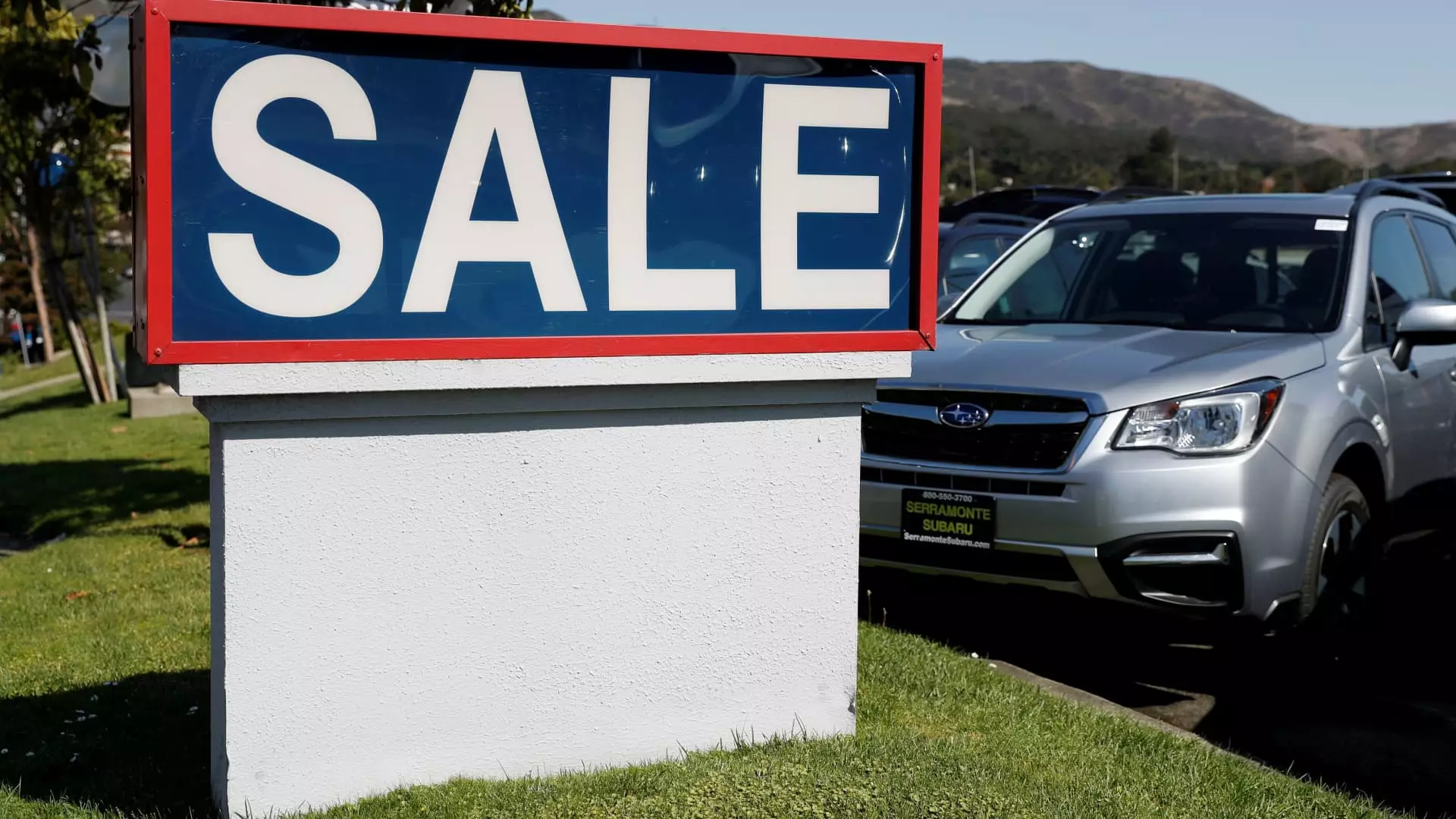As we approach 2025, the U.S. new vehicle market is poised for a significant resurgence, with sales anticipated to reach heights not seen since 2019. Analysts from various automotive research firms, including Cox Automotive, predict sales to climb to approximately 16.3 million units, buoyed by declining interest rates and improved affordability. While the forecast reflects a positive trajectory compared to the expectations of 15.9 to 16 million for the current year, numerous factors underpin this optimistic outlook, setting the stage for a multifaceted market landscape.
The anticipated rebound in vehicle sales represents a shift towards normalization after a prolonged period of inflated prices and sparse inventory triggered by supply chain challenges during the COVID-19 pandemic. This shift towards a more “friendly” consumer marketplace, as articulated by Jessica Caldwell, head of insights at Edmunds, indicates that while financial challenges remain for many consumers, the conditions for purchasing a vehicle are gradually improving.
With the average transaction price for new vehicles reported at $47,465—a decrease from 2023 but a substantial increase from 2019—affordability remains a key issue for buyers. The auto industry has been plagued by elevated prices over the past few years, but a slowdown in pricing growth, coupled with new inventory gains, could catalyze increased consumer purchases of entry-level vehicles. This segment is emerging as a crucial driver in the expected sales spike, as consumers seek alternatives that offer better value.
Another anticipated growth area is the electrified vehicle market, encompassing hybrids, plug-in hybrids, and all-electric models. Despite Tesla’s declining market share—a notable phenomenon considering its dominant role in the EV market—forecasts indicate that U.S. sales of all-electric vehicles will set a new record in 2024, with approximately 1.3 million units expected to be sold. This represents roughly 8% of the overall market share, signaling an upward trend in consumer acceptance of electric vehicles.
Cox Automotive projects that around 25% of new vehicle sales will be electrified by 2025, with all-electric vehicles accounting for over 10% of sales. However, analysts caution that the potential end of federal consumer incentives for electric vehicle purchases, which could amount to up to $7,500, poses a significant risk to this market segment. Such regulatory uncertainties could dampen sales at a crucial time when manufacturers are vying for market share.
Despite the generally positive sales forecasts, underlying market dynamics introduce a layer of complexity that could influence automaker outcomes. Cox Automotive’s chief economist, Jonathan Smoke, highlighted the potential ramifications of President-elect Donald Trump’s proposed tariffs on vehicle production in Canada and Mexico. A radical shift in trade policy, including predictions of up to a 25% tariff, could disrupt manufacturing operations and, consequently, pricing strategies.
Additionally, the expected increase in new vehicle sales may not translate into improved earnings for automakers. Analysts are already sensing unsustainable pricing structures, attributing rising inventories and increased incentives to a decrease in dealer profits per vehicle. As manufacturers face pressure to maintain competitive pricing, the balance between enticing consumers and securing profits could become challenging.
As we navigate the evolving automotive landscape, it will be crucial to monitor how external factors—including regulatory shifts, competitive pressures, and consumer behavior—play a role in shaping the future of U.S. vehicle sales. The outlook for 2025 may be optimistic, yet the complexities underlying this trajectory will require stakeholders to remain adaptable and responsive to changes in both market conditions and consumer preferences.
While a rebound in U.S. new vehicle sales appears imminent, the interplay of various factors—from the surge in entry-level vehicle interest to the expansion of electric vehicle options—will shape a nuanced market environment. Automobile manufacturers, consumers, and industry stakeholders all have a stake in navigating this pivotal time, balancing opportunities for growth against the uncertainties that lie ahead.

